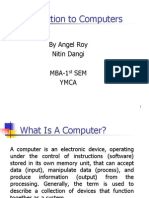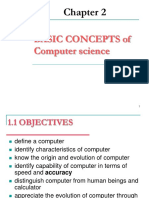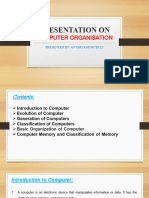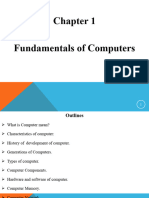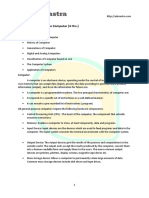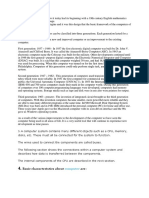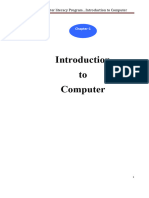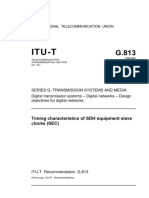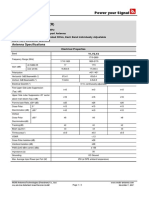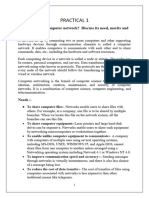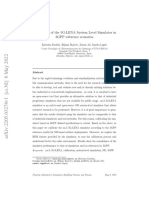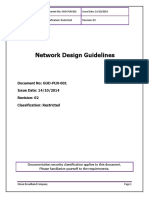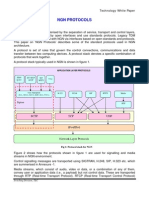0% found this document useful (0 votes)
98 views37 pagesComputer Fundamentals
The document provides a comprehensive overview of computers, detailing their history, functionalities, advantages, generations, components, and types. It explains the evolution from early counting devices like the abacus to modern computers, highlighting key developments in technology. Additionally, it categorizes computers based on data handling capabilities and size, and describes essential components such as input/output devices, memory, and software.
Uploaded by
Sabahuddin N BhodanCopyright
© © All Rights Reserved
We take content rights seriously. If you suspect this is your content, claim it here.
Available Formats
Download as PPTX, PDF, TXT or read online on Scribd
0% found this document useful (0 votes)
98 views37 pagesComputer Fundamentals
The document provides a comprehensive overview of computers, detailing their history, functionalities, advantages, generations, components, and types. It explains the evolution from early counting devices like the abacus to modern computers, highlighting key developments in technology. Additionally, it categorizes computers based on data handling capabilities and size, and describes essential components such as input/output devices, memory, and software.
Uploaded by
Sabahuddin N BhodanCopyright
© © All Rights Reserved
We take content rights seriously. If you suspect this is your content, claim it here.
Available Formats
Download as PPTX, PDF, TXT or read online on Scribd
/ 37







